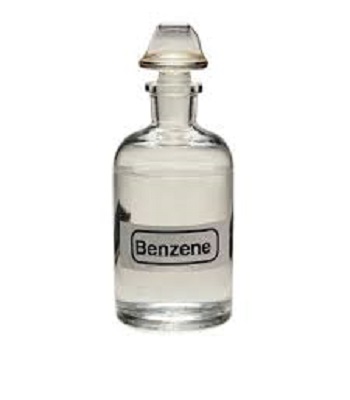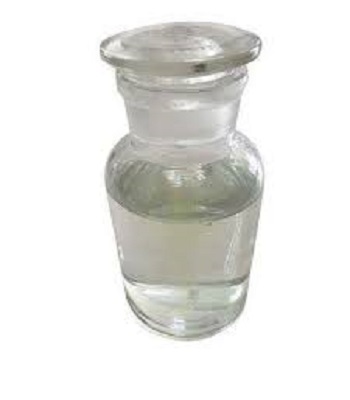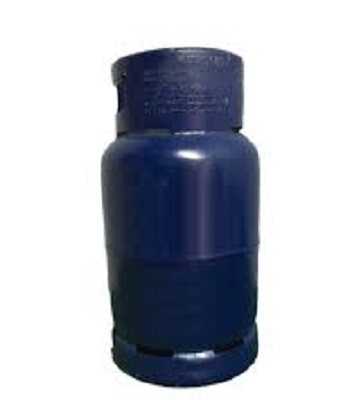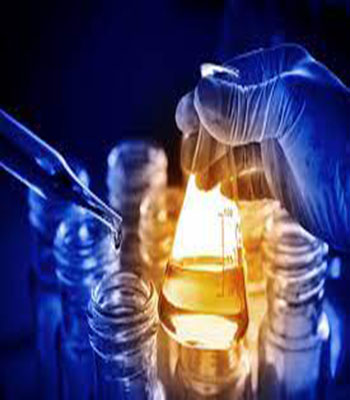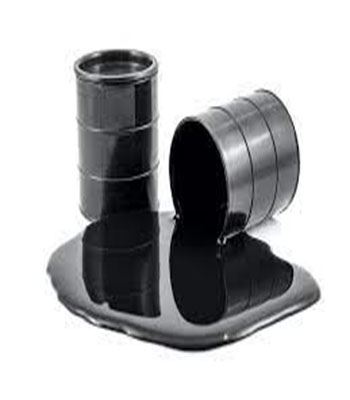Benzene
$0.00DESCRIPTION
Benzene (cyclohexa-1, 3) is the basis of a group of hydrocarbons referred to as “aromatics”. It is a clear colorless liquid, with a characteristic aromatic smell. Benzene is produced worldwide in substantial quantities, and because it is very easy to transport by ship, it is traded internationally.
Benzene
$0.00DESCRIPTION
Benzene (cyclohexa-1, 3) is the basis of a group of hydrocarbons referred to as “aromatics”. It is a clear colorless liquid, with a characteristic aromatic smell. Benzene is produced worldwide in substantial quantities, and because it is very easy to transport by ship, it is traded internationally.
Benzene
$0.00DESCRIPTION
Benzene (cyclohexa-1, 3) is the basis of a group of hydrocarbons referred to as “aromatics”. It is a clear colorless liquid, with a characteristic aromatic smell. Benzene is produced worldwide in substantial quantities, and because it is very easy to transport by ship, it is traded internationally.
Benzene-Hydrocarbons
$0.00Benzene is a chemical that is a colorless or light yellow liquid at room temperature. It has a sweet odor and is highly flammable. Benzene evaporates into the air very quickly. Its vapor is heavier than air and may sink into low-lying areas. Benzene dissolves only slightly in water and will float on top of water.
Benzene-Hydrocarbons
$0.00Benzene is a chemical that is a colorless or light yellow liquid at room temperature. It has a sweet odor and is highly flammable. Benzene evaporates into the air very quickly. Its vapor is heavier than air and may sink into low-lying areas. Benzene dissolves only slightly in water and will float on top of water.
Benzene-Hydrocarbons
$0.00Benzene is a chemical that is a colorless or light yellow liquid at room temperature. It has a sweet odor and is highly flammable. Benzene evaporates into the air very quickly. Its vapor is heavier than air and may sink into low-lying areas. Benzene dissolves only slightly in water and will float on top of water.
Benzene-Hydrocarbons
$0.00Benzene is a chemical that is a colorless or light yellow liquid at room temperature. It has a sweet odor and is highly flammable. Benzene evaporates into the air very quickly. Its vapor is heavier than air and may sink into low-lying areas. Benzene dissolves only slightly in water and will float on top of water.
Benzene-Hydrocarbons
$0.00Benzene is a chemical that is a colorless or light yellow liquid at room temperature. It has a sweet odor and is highly flammable. Benzene evaporates into the air very quickly. Its vapor is heavier than air and may sink into low-lying areas. Benzene dissolves only slightly in water and will float on top of water.
Benzene-Hydrocarbons
$0.00Benzene is a chemical that is a colorless or light yellow liquid at room temperature. It has a sweet odor and is highly flammable. Benzene evaporates into the air very quickly. Its vapor is heavier than air and may sink into low-lying areas. Benzene dissolves only slightly in water and will float on top of water.
Butane-Hydrocarbons
$0.00Butane or n-butane is an alkane with the formula C₄H₁₀. Butane is a gas at room temperature and atmospheric pressure. Butane is a highly flammable, colorless, easily liquefied gas that quickly vaporizes at room temperature. Butane is used as fuel and also as raw material in production of olefins.
Butane-Hydrocarbons
$0.00Butane or n-butane is an alkane with the formula C₄H₁₀. Butane is a gas at room temperature and atmospheric pressure. Butane is a highly flammable, colorless, easily liquefied gas that quickly vaporizes at room temperature. Butane is used as fuel and also as raw material in production of olefins.
Butane-Hydrocarbons
$0.00Butane or n-butane is an alkane with the formula C₄H₁₀. Butane is a gas at room temperature and atmospheric pressure. Butane is a highly flammable, colorless, easily liquefied gas that quickly vaporizes at room temperature. Butane is used as fuel and also as raw material in production of olefins.
Condensate-Natural Gas Condensate
$0.00The natural gas condensate is also called condensate, or gas condensate, or sometimes natural gasoline because it contains hydrocarbons within the gasoline boiling range, and is also referred to by the shortened name condy by many workers on gas installations.In general, gas condensate has a specific gravity ranging from 0.5 to 0.8, and is composed of hydrocarbons such as propane, butane, pentane, and hexane. Natural gas compounds with more than two carbon atoms exist as liquids at ambient temperatures
Condensate-Natural Gas Condensate
$0.00Gas condensate is mostly composed of pentane and heavier hydrocarbons (+ C5) and depending on its harvesting position can contain sulfur and salt and is usually free of metals and about half of it is naphtha.
Unlike butane and propane, gas condensates do not require special conditions to remain liquid and can be converted to diesel, gasoline, kerosene, jet fuel, etc. in various ways. Compared to crude oil refinery, in gas condensate refinery, conversion and refining processes are less, so its investment cost is less than the investment cost of crude oil refinery.
The specific calorific value of each liter of gas condensate is about 32706 BTU, which is approximately equal to the heat value of 826 /. Cubic meters of natural gas is the first national pipeline; Therefore, this product is of considerable importance for export due to its high calorific value. In such a way that its export can return the initial investment cost of a gas refinery in a short period of time, provided that it has the desired technical characteristics.
Condensate-Natural Gas Condensate
$0.00Gas condensate is mostly composed of pentane and heavier hydrocarbons (+ C5) and depending on its harvesting position can contain sulfur and salt and is usually free of metals and about half of it is naphtha.
Unlike butane and propane, gas condensates do not require special conditions to remain liquid and can be converted to diesel, gasoline, kerosene, jet fuel, etc. in various ways. Compared to crude oil refinery, in gas condensate refinery, conversion and refining processes are less, so its investment cost is less than the investment cost of crude oil refinery.
The specific calorific value of each liter of gas condensate is about 32706 BTU, which is approximately equal to the heat value of 826 /. Cubic meters of natural gas is the first national pipeline; Therefore, this product is of considerable importance for export due to its high calorific value. In such a way that its export can return the initial investment cost of a gas refinery in a short period of time, provided that it has the desired technical characteristics.
Condensate-Natural Gas Condensate
$0.00Gas condensate is mostly composed of pentane and heavier hydrocarbons (+ C5) and depending on its harvesting position can contain sulfur and salt and is usually free of metals and about half of it is naphtha.
Unlike butane and propane, gas condensates do not require special conditions to remain liquid and can be converted to diesel, gasoline, kerosene, jet fuel, etc. in various ways. Compared to crude oil refinery, in gas condensate refinery, conversion and refining processes are less, so its investment cost is less than the investment cost of crude oil refinery.
The specific calorific value of each liter of gas condensate is about 32706 BTU, which is approximately equal to the heat value of 826 /. Cubic meters of natural gas is the first national pipeline; Therefore, this product is of considerable importance for export due to its high calorific value. In such a way that its export can return the initial investment cost of a gas refinery in a short period of time, provided that it has the desired technical characteristics.
Condensate-Natural Gas Condensate
$0.00The natural gas condensate is also called condensate, or gas condensate, or sometimes natural gasoline because it contains hydrocarbons within the gasoline boiling range, and is also referred to by the shortened name condy by many workers on gas installations.In general, gas condensate has a specific gravity ranging from 0.5 to 0.8, and is composed of hydrocarbons such as propane, butane, pentane, and hexane. Natural gas compounds with more than two carbon atoms exist as liquids at ambient temperatures
Condensate-Natural Gas Condensate
$0.00The natural gas condensate is also called condensate, or gas condensate, or sometimes natural gasoline because it contains hydrocarbons within the gasoline boiling range, and is also referred to by the shortened name condy by many workers on gas installations.In general, gas condensate has a specific gravity ranging from 0.5 to 0.8, and is composed of hydrocarbons such as propane, butane, pentane, and hexane. Natural gas compounds with more than two carbon atoms exist as liquids at ambient temperatures
Crude oil
$0.00Petroleum, also known as crude oil and oil, is a naturally occurring, yellowish-black liquid found in geological formations beneath the Earth’s surface. It is commonly refined into various types of fuels. Petroleum consists basically of compounds of only two elements, carbon and hydrogen. Because these elements combine in a large variety of complex ways, however, crude oils vary greatly in their chemical composition. Their physical properties such as color, specific gravity, and viscosity also vary widely.
Crude oil
$0.00Petroleum, also known as crude oil and oil, is a naturally occurring, yellowish-black liquid found in geological formations beneath the Earth’s surface. It is commonly refined into various types of fuels. Petroleum consists basically of compounds of only two elements, carbon and hydrogen. Because these elements combine in a large variety of complex ways, however, crude oils vary greatly in their chemical composition. Their physical properties such as color, specific gravity, and viscosity also vary widely.
Crude oil
$0.00Petroleum, also known as crude oil and oil, is a naturally occurring, yellowish-black liquid found in geological formations beneath the Earth’s surface. It is commonly refined into various types of fuels. Petroleum consists basically of compounds of only two elements, carbon and hydrogen. Because these elements combine in a large variety of complex ways, however, crude oils vary greatly in their chemical composition. Their physical properties such as color, specific gravity, and viscosity also vary widely.
crude Oil-Forozan Ecrude Oil
$0.00Crude oil or petroleum is a thick, flammable liquid of burnt brown or dark green, or black that is found in the upper layers of parts of the Earth’s crust. The oil contains a complex mixture of different hydrocarbons. Most of these hydrocarbons are from the alkane chain; But inwardly, composition or purity may vary greatly. Oil is called black gold. Oil is considered a fossil fuel and is non-renewable.
crude Oil-Forozan Ecrude Oil
$0.00Crude oil or petroleum is a thick, flammable liquid of burnt brown or dark green, or black that is found in the upper layers of parts of the Earth’s crust. The oil contains a complex mixture of different hydrocarbons. Most of these hydrocarbons are from the alkane chain; But inwardly, composition or purity may vary greatly. Oil is called black gold. Oil is considered a fossil fuel and is non-renewable.
crude Oil-Forozan Ecrude Oil
$0.00Crude oil or petroleum is a thick, flammable liquid of burnt brown or dark green, or black that is found in the upper layers of parts of the Earth’s crust. The oil contains a complex mixture of different hydrocarbons. Most of these hydrocarbons are from the alkane chain; But inwardly, composition or purity may vary greatly. Oil is called black gold. Oil is considered a fossil fuel and is non-renewable.
CRUDE OIL-HEAVY CRUDE OIL
$0.00Crude oil or petroleum is a thick, flammable liquid of burnt brown or dark green, or black that is found in the upper layers of parts of the Earth’s crust. The oil contains a complex mixture of different hydrocarbons. Most of these hydrocarbons are from the alkane chain; But inwardly, composition or purity may vary greatly. Oil is called black gold. Oil is considered a fossil fuel and is non-renewable.
CRUDE OIL-HEAVY CRUDE OIL
$0.00Crude oil or petroleum is a thick, flammable liquid of burnt brown or dark green, or black that is found in the upper layers of parts of the Earth’s crust. The oil contains a complex mixture of different hydrocarbons. Most of these hydrocarbons are from the alkane chain; But inwardly, composition or purity may vary greatly. Oil is called black gold. Oil is considered a fossil fuel and is non-renewable.
CRUDE OIL-HEAVY CRUDE OIL
$0.00Crude oil or petroleum is a thick, flammable liquid of burnt brown or dark green, or black that is found in the upper layers of parts of the Earth’s crust. The oil contains a complex mixture of different hydrocarbons. Most of these hydrocarbons are from the alkane chain; But inwardly, composition or purity may vary greatly. Oil is called black gold. Oil is considered a fossil fuel and is non-renewable.
Crude Oil-Koroosh Crude Oil
$0.00Crude oil or petroleum is a thick, flammable liquid of burnt brown or dark green, or black that is found in the upper layers of parts of the Earth’s crust. The oil contains a complex mixture of different hydrocarbons. Most of these hydrocarbons are from the alkane chain; But inwardly, composition or purity may vary greatly. Oil is called black gold. Oil is considered a fossil fuel and is non-renewable.
Crude Oil-Koroosh Crude Oil
$0.00Crude oil or petroleum is a thick, flammable liquid of burnt brown or dark green, or black that is found in the upper layers of parts of the Earth’s crust. The oil contains a complex mixture of different hydrocarbons. Most of these hydrocarbons are from the alkane chain; But inwardly, composition or purity may vary greatly. Oil is called black gold. Oil is considered a fossil fuel and is non-renewable.
Crude Oil-Koroosh Crude Oil
$0.00Crude oil or petroleum is a thick, flammable liquid of burnt brown or dark green, or black that is found in the upper layers of parts of the Earth’s crust. The oil contains a complex mixture of different hydrocarbons. Most of these hydrocarbons are from the alkane chain; But inwardly, composition or purity may vary greatly. Oil is called black gold. Oil is considered a fossil fuel and is non-renewable.
Crude Oil-Lavan Crude Oil
$0.00Crude oil or petroleum is a thick, flammable liquid of burnt brown or dark green, or black that is found in the upper layers of parts of the Earth’s crust. The oil contains a complex mixture of different hydrocarbons. Most of these hydrocarbons are from the alkane chain; But inwardly, composition or purity may vary greatly. Oil is called black gold. Oil is considered a fossil fuel and is non-renewable.
Crude Oil-Lavan Crude Oil
$0.00Crude oil or petroleum is a thick, flammable liquid of burnt brown or dark green, or black that is found in the upper layers of parts of the Earth’s crust. The oil contains a complex mixture of different hydrocarbons. Most of these hydrocarbons are from the alkane chain; But inwardly, composition or purity may vary greatly. Oil is called black gold. Oil is considered a fossil fuel and is non-renewable.
Crude Oil-Lavan Crude Oil
$0.00Crude oil or petroleum is a thick, flammable liquid of burnt brown or dark green, or black that is found in the upper layers of parts of the Earth’s crust. The oil contains a complex mixture of different hydrocarbons. Most of these hydrocarbons are from the alkane chain; But inwardly, composition or purity may vary greatly. Oil is called black gold. Oil is considered a fossil fuel and is non-renewable.
Crude oil-LIGHT CRUDE OIL
$0.00Crude oil or petroleum is a thick, flammable liquid of burnt brown or dark green, or black that is found in the upper layers of parts of the Earth’s crust. The oil contains a complex mixture of different hydrocarbons. Most of these hydrocarbons are from the alkane chain; But inwardly, composition or purity may vary greatly. Oil is called black gold. Oil is considered a fossil fuel and is non-renewable.
Crude oil-LIGHT CRUDE OIL
$0.00Crude oil or petroleum is a thick, flammable liquid of burnt brown or dark green, or black that is found in the upper layers of parts of the Earth’s crust. The oil contains a complex mixture of different hydrocarbons. Most of these hydrocarbons are from the alkane chain; But inwardly, composition or purity may vary greatly. Oil is called black gold. Oil is considered a fossil fuel and is non-renewable.
Crude oil-LIGHT CRUDE OIL
$0.00Crude oil or petroleum is a thick, flammable liquid of burnt brown or dark green, or black that is found in the upper layers of parts of the Earth’s crust. The oil contains a complex mixture of different hydrocarbons. Most of these hydrocarbons are from the alkane chain; But inwardly, composition or purity may vary greatly. Oil is called black gold. Oil is considered a fossil fuel and is non-renewable.



